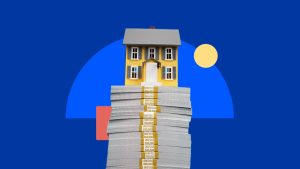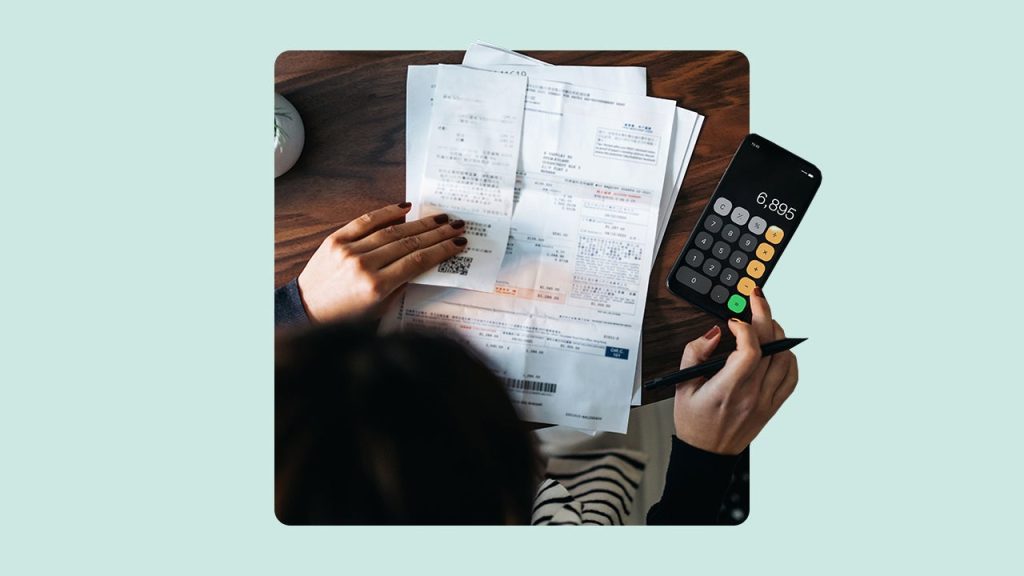When I was in college, getting student aid felt like free money – who doesn’t love getting free stuff?
My wife and I were newly married and finishing our degrees. We were busy waiting tables and working in daycare to pay for rent and car insurance. On top of all that, we still had our degrees to finish, so we took whatever aid was offered.
I vaguely remember knowing the loans would have to be repaid at some point, but I never bothered to crunch the numbers since I didn’t really understand the repayment options. It felt like free money, considering how hard we had to work to get it otherwise.
I don’t know what I would have done if loan forgiveness had been on the table. I don’t recall hearing about loan forgiveness, so it had never been an option, but considering how strapped we were with our finances, the concept would very well have led me to check it out.
Student loan forgiveness has been a hot topic this year, and based on my attitude in college, it made me wonder how much students knew about repaying their loans when they took them out. I embarked on a mission to figure out two things:
- Did student loan forgiveness affect repayment plans? And if so, how?
- Did student loan forgiveness shape student mindset toward debt repayment? If so, how?
Federal Student Aid’s stance on student loan repayment
Given the current negative climate surrounding student loan forgiveness, I half expected to see the U.S. Department of Education’s Federal Student Aid (FSA) page on loans littered with pop-up ads that said, “Borrow now, never pay later.”
The only reference I found to student loan forgiveness was related to working in certain jobs with certain conditions. It also gave clear explanations of what taking out a federal student loan entailed. Surprisingly, the page gave sound financial advice about repaying borrowed money:
Before you take out a loan, it’s important to understand that a loan is a legal obligation that makes you responsible for repaying the amount you borrow with interest. Even though you don’t begin repaying your federal student loans right away, you shouldn’t wait to understand your responsibilities as a borrower.
Given how clear the messaging is from the FSA, how is it that, according to the New York Fed’s Quarterly Report on Houshold Debt and Credit, 10 percent of student balances were past due while roughly six million student loan borrowers were in default?
Student loan borrowers and the prospect of loan forgiveness
During COVID, repayment had been delayed for over 40 months for many students, giving them some time to develop a repayment strategy. Could it be that the promise of loan forgiveness distracted them from focusing on a repayment plan, leading to payment shock when repayment began on unforgiven balances?
Then it hit me – student loans are the only type of loans that don’t require immediate repayment.
Every loan I ever originated came with a monthly payment within a month of the loan closing. This is not the case for student loans. Without the urgency of immediate payment, budgeting and income become a future concern, rather than a present problem.
Student loan forgiveness may be at the forefront since the reality of repayment won’t hit until they complete their studies. Considering student loans are the first type of credit most of us take on after high school, this perspective could potentially cripple people’s financial growth early on in their lives.
I decided to ask some of my colleagues and recent student loan borrowers what their perception was of student loan repayment.
Student loans send a buy now, pay much later message
My colleague Andrew Pentis wrote an article about worrisome buy now, pay later trends. He brought up three main points:
- Borrowers have high debt balances on other accounts.
- They’re borrowing again and again.
- Most BNPL borrowers don’t have good credit.
As I read this article, I wondered if these trends could apply to student loan borrowers. Though not exactly correlated, student loan borrowers had similar characteristics:
- They typically carry higher balances than any other loan type early on in their credit journeys.
- They borrow continuously until they graduate.
- Many of them have no credit history – not even a bad one.
I decided to ask some of my colleagues to get their take on this idea.
Student loan repayment is a future problem
Bankrate senior writer Lauren Nowacki, who recently paid off all of her student loans, admits repayment wasn’t on her mind from the outset.
This is kind of crazy, but I took out student loans having zero idea about them besides I was borrowing money, which would be ‘future Lauren’s’ problem. I had no idea about federal versus private or that forgiveness was even an option.
— Lauren Nowacki, Bankrate Senior Writer
Bernadette Joy, a nationally recognized personal finance expert who has helped thousands of people improve their financial health as the founder of Crush Your Money Goals, admits she had a similar frame of mind, not having a firm grasp of student repayment options when she started college.
I had no sense of how I was going to repay my loans when I first started school. I didn’t have a repayment plan and didn’t begin thinking about it until I was 10 weeks from graduation.
— Bernadette Joy, founder of Crush Your Money Goals
Joy was also surprised to find out the standard repayment options are 10 years. She decided that wasn’t acceptable and paid the balance off in two years.
Like Nowacki and Joy, Ashley Budde, who is a data operations manager at a nonprofit conservancy called Forest Park Forever, didn’t think about repayment even though she had taken out federal and private loans for both her undergraduate and graduate education.
“When I first took out loans for undergrad, it was part of my financial aid package,” Budde says. “It was what I was ‘supposed’ to do.”
Once she realized she was headed toward a career path in the nonprofit sector, she started thinking about repayment and the Public Service Loan Forgiveness (PSLF) program. She finished paying off her private loans quicker but paid “the lowest possible payment” for the federal loan since the rest would eventually be forgiven.
Student loan forgiveness didn’t change the way Budde viewed repaying other debt; she just saw it as an opportunity.
Having the option for forgiveness was a perk. I will say that based on my repayment schedule for the Direct Loan, I felt like I was going to be repaying it for my entire lifetime.
— Ashley Budde, data operations manager, Forest Park Forever
After learning about their experiences, I realized the reality of paying off loans didn’t seem to register for many students until the end of their studies. Faced with the sticker shock of the final loan balance, loan forgiveness must have seemed like a welcome relief that could have stimulated more savings or long-term investing.
I began looking at studies that would give me an idea of how borrowers managed their finances during the COVID payment pause. I also wondered how forgiveness shaped spending and borrowing habits. I was surprised by what I found.
How student loan forgiveness affected student mindset
Pausing or forgiveness can lead to more borrowing and spending
Forgiving negative credit history can give you more credit access to take on new debt.
The student loan pause during the pandemic was meant to give borrowers relief from the burden of making payments. It made complete sense – many people were out of work with entire portions of the economy closed for business.
One benefit from the pause was large-scale forgiveness of negative entries, or derogatory marks (DM), on credit reports, which improved overall credit scores once they were removed. These improved scores may have helped student loan borrowers seek out additional credit cards or increased credit lines to further their spending.
A study by the Federal Reserve Bank of Boston found that paused student loan holders, particularly those with DMs, increased their credit use by about $1,600 compared to non-student loan holders whose credit balance increased by about $400. The study also showed that student loan borrowers had more credit cards by the end of the pandemic than those without student loans.
One in three borrowers spent money assuming they’d receive some loan forgiveness
Forgiving debt can clear room in a budget to increase spending. It may also lead borrowers to avoid planning for repayment.
A study by Intelligent.com in Aug. 2023 found that 45 percent of borrowers who identified as being at least somewhat confident they would receive $10,000 in student debt relief spent more money than usual.
Forty-four percent said they spent money on retail items and 20 percent said they used it on a vacation. Only 37 percent said they paid down debt, but a significant portion of people also used the money for necessities such as home and auto repairs (33 percent) and rent payments (30 percent).
One sobering statistic that may have foreshadowed the uptick in current student delinquencies is that 58 percent of borrowers said they were “very unprepared” to resume payments while more than one in four said they were “likely” or “somewhat likely” to refuse to pay the $10,000 in expected relief if payments did resume.
Forgiveness recipients borrowed and changed jobs more after receiving relief
Freeing up student loan debt may make you seek out more debt through mortgages, car loans and credit cards. It could also lead to a job change outside of public service.
A study by the Becker Friedman Institute for Economics showed an increase in mortgage, auto and credit borrowing in the aftermath of the largest student loan discharge in U.S. history in 2021. The study analyzed TransUnion data and employment records from another large credit bureau.
In the six months following forgiveness, borrowers spent $2,300 more on mortgages, $230 more on auto financing and $220 more on credit cards. They also switched jobs frequently, often out of public service since they had received the forgiveness benefit that had motivated them to pursue a public service career.
What should we be teaching students about loan repayment and forgiveness?
Given that “repayment” and “forgiveness” are completely different things, seeing them in the same loan-related context is strange. To understand how to present both ideas to future borrowers, I consulted some experts to help.
Amy Lins
Before her role as the vice president of customer success at Money Management International, Amy Lins taught high school math, including some lessons in financial literacy. According to her, most students don’t understand the repayment options for student loans. When it comes to forgiveness, she thinks it has no role in student loan repayment conversations unless someone is following one of the career paths it was designed to serve.
“It [works] for people [who] are specifically looking at PSLF or teacher loan forgiveness, which are programs that have been around for years,” she says. She wants people to understand that income and forgiveness plans are also meant to help meet hardship needs: “If you can make the standard payment, make [it] and pay off your loans.”
Lins also emphasized the need to create a bigger sense of repayment urgency, starting as early as high school, since many students put it off to the future. She said they need to ask questions that acknowledge the risk they’re taking on, within the context of the job market and life changes that could occur.
Hanna Horvath
In addition to being a certified financial planner and financial expert for Bankrate, Hannah Horvath has studied the behavioral side of money. Horvath says students need to do more research about their career earnings potential before starting their school search. Before taking on major debt, Horvath suggests running the numbers while thinking about possible careers and earning potential.
Horvath also says a behavioral science approach to student loans requires education around the decisions you make. A big part of that comes with having realistic expectations about how much you’ll earn: “Some graduates expect to make 6 figures out of college when that’s the top 5% of earners,” she says.
She also suggests role-playing how you would describe the job you want to someone if you just got hired, including the name of the job and the title. Students who can’t verbalize specifics should do more research before diving into debt to figure it out in college.
This may seem like simple advice given how difficult it is to navigate changing job markets and industries over several turbulent decades of world events and financial crises, but the message is clear: Don’t borrow money until you have a firm sense of what you want to do.
Buying a car requires knowing the year, make, model, features and mileage before you borrow the money. If college is your best “explore-a-career” plan, find a community college or in-state school to keep the cost to a minimum.
Mark Kantrowitz
Student loans are unique because repayment isn’t required immediately. That means the full effect of debt isn’t realized until after graduation. Mark Kantrowitz, a nationally renowned student financial aid expert, says the urgency of repayment needs to begin the minute you take out a student loan.
“It needs to be just in time – it needs to be immediate when you’re borrowing,” he explains. “That’s when you need to be made aware of the consequences of what you’re doing.”
According to Kantrowitz, loan forgiveness is not a new concept; it was originally something students earned as a result of committing to years of public service or offered as relief due to financial hardship. That changed with the Biden administration.
“The Biden administration departed from the usual idea that loan forgiveness or loan cancellation is when you’re doing something to earn it or are unable to pay the debt,” says Kantrowitz. “And it was just that everybody was going to qualify…as many as two-thirds of all borrowers.”
He explained the expectation of forgiveness may lead to changes in financial behavior.
If you expect someone else to pay off your loans, whether for forgiveness or some other employer, you might borrow to the limit because you’re not going to face the consequences of your debt. That’s what’s often referred to as a moral hazard.
— Mark Kantrowitz, student financial aid expert
The lessons I’d want to teach about student loan repayment and forgiveness
I was staunchly opposed to student loan forgiveness at first, but my opinion has changed for one reason – student loans are similar to the predatory mortgages that brought down the housing industry:
- You don’t need an income or credit score to qualify.
- The less you make, the more you’re eligible to borrow.
- Your ability to repay isn’t established until you graduate from college and get a job.
The easy-qualifying standards seem to make it easy for colleges to endlessly increase tuition because they aren’t required to assess the student’s ability to repay the loan while they’re in college.
The fact that student loans need so many built in protections is the primary reason why I understand the push for loan forgiveness, but it begs the question – why are we making loans to students who have no verifiable way to repay them?
Since I don’t know the answer to that loaded question, I’ll condense what I’ve learned from the experts, the studies and student loan borrowers:
1. Sit down and work out a payment plan with your first student loan
One consistent theme of every borrower I interview is that repayment is not anywhere on the priority list when you get into college – it needs to be.
Every semester, at least plug your loan amount and longest repayment term into a student loan calculator to see how your monthly payment could be growing. Then apply like crazy for every scholarship, grant and work study opportunity you can find.
2. Prequalify for a student loan to see where you stand
If you want to know what the non-government lending world thinks about your ability to repay, get prequalified for a private student loan on your own. It will at least give you a rough idea of what the payment might look like when you graduate.
3. Don’t borrow unless you’ve got a clear idea of what you want to do
Check out salary sites like Glassdoor to see what the average pay is, not the highest. Consider a gap year or work a few jobs within the field you’re interested in before you apply for school.
4. Look at forgiveness as a reward or a hardship option
Committing to public service is not for the fainthearted, and forgiveness is a benefit for making that commitment. It’s also something to consider if life happens after you graduate, and you need help paying your balances off.
Final thoughts
It may be time to rethink the tradition of going to college directly out of high school and replace it with a thoughtful experiment in “finding your passion” by making money at a variety of different jobs before applying to college. Try several side hustles and see if any move your passion meter.
If you’re still living at home, stockpile the money into savings accounts or an index fund so you can get some return on your money. Allocate some of the cash toward your college expenses to keep your debt burden to a minimum. Talk to professionals with careers you’re interested in and find out how much they made when they first entered the workforce.
The best way to avoid debt you can’t repay or you want forgiven is to know what you want to do, how much you’ll make and then borrow as little as you need to get your education.
Why we ask for feedback
Your feedback helps us improve our content and services. It takes less than a minute to
complete.
Your responses are anonymous and will only be used for improving our website.
Help us improve our content
Read the full article here









